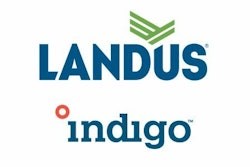What happens when a country stops purchasing U.S. corn due to concerns about long-term storage of it in hot, humid environments?
In Egypt, the U.S. Grains Council (USGC) has stepped in to help, working with Dr. Klein Ileleii from Purdue University to conduct a corn storage program to improve conditions and the overall storability of U.S. corn there.
For the next year, USGC will gather data from a warehouse owned by the largest corn importer in Egypt, where USGC-sponsored aeration equipment has been installed.
The data collected will be compared to a warehouse that does not use the equipment to show the economic and grain quality benefits of using these mechanisms in storage facilities.
Dr. Kyle Gilliam, USGC manager of global strategies and trade, recently visited Damietta, Egypt, to assist in the storage project. Gilliam worked closely with the Egyptian importer while there.
Using a grant from USGC member Missouri Corn Growers Association, aeration equipment that uses standalone pedestals in flat warehouses was installed in one of the 24 storage facilities. The Egyptian government only allows flat storage at the port, making this style of equipment a necessity.
“Egypt is a 10 million metric ton (MMT) per year import market,” Gilliam says. “With this program and the continued relationship with the grains importing leader, combined with USGC’s industrial starch program highlighting the superior performance of U.S. corn in wet milling, we were able to see four vessels of U.S. corn traded into Egypt this year (approximately a $60 million investment).
"The hope with this program is to show the Egyptians how they can properly store U.S. corn and anchor at least 1 MMT of exports to Egypt annually.”
Complimentary to the storage program, USGC also worked in Egypt to conduct a starch program, that focused on how industrial wet millers can see an increased profit from using U.S. corn over that of other origins.
The corn storage project will continue for the next year in Egypt as USGC gathers data. Additionally, USGC plans to roll out this program in other countries and companies around the world where storage conditions negatively impact their image of U.S. corn.
Corn sales to Egypt increased by 830 percent in the 2020/2021 marketing year for a total of 451,500 metric tons, or 17.7 million bushels. Egypt is the second-largest market for U.S. corn in the Middle East region.

















